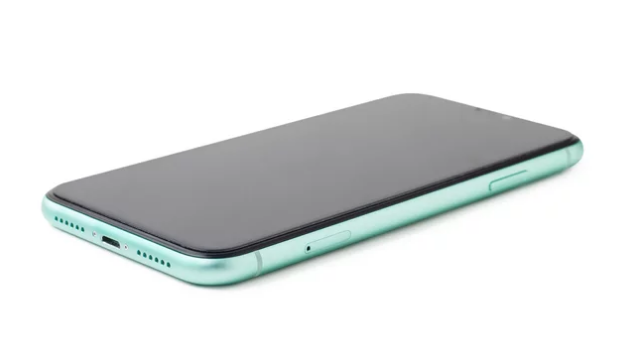Many iPhone users experience Wi-Fi issues immediately after updating iOS. While some connectivity problems are caused by software conflicts, persistent or recurring issues often point to underlying hardware problems. Understanding how to distinguish between software glitches and hardware faults is essential for a lasting fix.
This guide explains why Wi-Fi issues occur after an iOS update, how to diagnose potential hardware failures, and practical troubleshooting tips to restore stable connectivity.
1. Why Wi-Fi Problems Appear After an iOS Update
iOS updates introduce new features, security patches, and bug fixes. However, they can also inadvertently affect Wi-Fi functionality.
Common causes include:
- Software bugs or corrupted updates that prevent the Wi-Fi module from initializing.
- Conflicts with saved network settings or cached data.
- Incompatibility with router firmware after system changes.
- Interference with Bluetooth or cellular radios, since these share components with the Wi-Fi chip.
While these issues are often temporary, repeated failures may indicate hardware vulnerabilities exacerbated by the update.
2. Initial Software Troubleshooting Steps
Before assuming a hardware problem, perform these software fixes:
a. Restart iPhone and Router
Power off your iPhone and router for 30 seconds, then turn them back on to reset network connections.
b. Forget and Reconnect to Wi-Fi Networks
Go to Settings → Wi-Fi → (i) → Forget This Network, then reconnect to refresh the connection.
c. Reset Network Settings
Navigate to Settings → General → Transfer or Reset iPhone → Reset → Reset Network Settings.
This clears stored Wi-Fi passwords and resets configurations.
d. Update or Reinstall iOS
Occasionally, Wi-Fi bugs are addressed in minor iOS updates. Ensure your device is running the latest firmware or perform a DFU restore if issues persist.
3. Signs of Hardware-Related Wi-Fi Problems
If Wi-Fi issues persist after software troubleshooting, your iPhone may have a hardware fault. Look for these indicators:
- Wi-Fi toggle is greyed out and cannot be activated.
- Networks appear briefly, then drop intermittently.
- No networks detected despite nearby routers.
- Overheating precedes Wi-Fi disconnection.
- Bluetooth also becomes unstable (shared Wi-Fi/Bluetooth chip).
These signs usually point to problems with the Wi-Fi chip, antenna flex cable, or logic board connections.
4. DIY Hardware Troubleshooting Tips
Some hardware issues can be temporarily mitigated using safe at-home methods:
a. Cool Down the Device
If the iPhone is overheating, turn it off for 10–15 minutes to allow the Wi-Fi chip to stabilize.
b. Remove Case and Clean Antenna Areas
Cases or debris can obstruct the Wi-Fi antenna. Gently clean the top and side edges of your iPhone.
c. Reset All Settings
Go to Settings → General → Reset → Reset All Settings to restore defaults without deleting personal data.
d. External Wi-Fi Adapter
As a temporary workaround, use a Lightning-compatible Wi-Fi dongle to regain connectivity until a professional repair is possible.
5. When to Seek Professional Repair
Persistent Wi-Fi problems after an iOS update often require board-level diagnostics. Professional technicians can:
- Replace a faulty Wi-Fi chip (IC).
- Repair or replace a damaged antenna flex cable.
- Resolder cracked logic board connections affecting Wi-Fi performance.
Always use an Apple Authorized Service Provider or a reputable repair center to avoid further damage.
6. Typical Repair Costs
| Repair Type | Estimated Cost (USD) | Repair Time |
|---|---|---|
| Antenna Replacement | $50–$100 | 30–60 minutes |
| Wi-Fi Chip Replacement | $120–$200 | 2–3 hours |
| Logic Board Repair | $180–$300 | 1–2 days |
Repair costs vary based on iPhone model, issue severity, and regional labor rates.
7. Preventing Future Wi-Fi Failures Post-Update
- Always install official iOS updates.
- Avoid exposing your device to high temperatures or moisture.
- Use certified charging accessories.
- Restart your iPhone weekly to clear temporary system cache.
- Ensure router firmware is up-to-date to maintain compatibility.
Final Thoughts
Wi-Fi problems after an iOS update may start as software-related, but persistent issues often reveal hardware vulnerabilities. Proper diagnosis and timely repair—whether DIY temporary fixes or professional chip/antenna replacement—are key to restoring stable connectivity.
By understanding the cause and following safe troubleshooting steps, you can maintain reliable Wi-Fi performance and prevent recurring issues with your iPhone.
Also Read :
